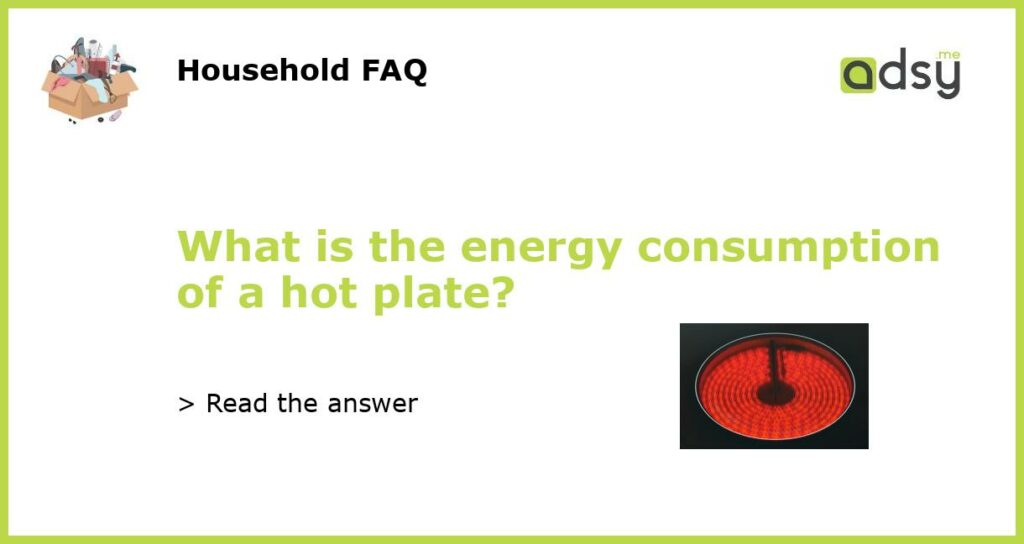Understanding the Energy Consumption of a Hot Plate
A hot plate, also known as a portable electric burner, is an essential appliance for many people who need an additional cooking surface. However, it’s important to understand how much energy it consumes to use it responsibly. In this article, we will discuss the energy consumption of a hot plate and offer some tips for reducing its usage.
How Much Energy Does a Hot Plate Consume?
The energy consumption of a hot plate can vary depending on its wattage. A typical hot plate has a wattage of 1000-1500 watts, while some larger models have a wattage of 1800 watts or more. This means that for every hour of use, a 1000-watt hot plate will consume 1 kilowatt-hour (kWh) of electricity, while a 1500-watt hot plate will consume 1.5 kWh.
How to Reduce Energy Consumption of a Hot Plate
If you want to reduce the energy consumption of your hot plate, there are several things you can do:
– Choose a hot plate with a lower wattage. A 1000-watt hot plate will consume less energy than a 1500-watt hot plate.
– Only use the hot plate when necessary. Turn it off as soon as you are done cooking.
– Use the right size pot or pan for the job. A smaller pot on a smaller burner will use less energy than a larger pot on a larger burner.
– Use the hot plate in a well-ventilated area. This will help it operate more efficiently as it won’t need to work as hard to cool down.
– Clean the hot plate regularly. A dirty hot plate can work less efficiently, which can consume more energy than necessary.
Benefits of Reducing Energy Consumption of a Hot Plate
Reducing the energy consumption of your hot plate can help you save money on your electricity bill and reduce your carbon footprint. It can also help extend the life of your hot plate by reducing wear and tear on the appliance.
A hot plate is a convenient appliance for cooking, but it’s important to use it responsibly and understand its energy consumption. Choosing a hot plate with lower wattage, using the right size pots and pans, cleaning it regularly, and turning it off when not in use are all simple ways to reduce energy consumption of a hot plate. By reducing energy consumption, you can save money, reduce your carbon footprint, and extend the life of your hot plate.






